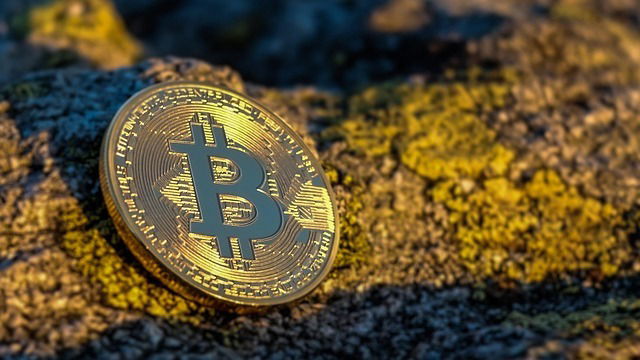
The United States has established a strategic cryptocurrency reserve, marking an official recognition of a digital asset that has now become a fixture in the global financial landscape. This move reflects growing interest from both institutional and retail investors, reshaping market trends and influencing strategic decisions among key stakeholders. The role of this reserve could redefine the future of cryptocurrencies within the global economy.
The power of the U.S. strategic Bitcoin Reserve
The strategic reserve created by the U.S. is based on a substantial volume of cryptocurrencies, mainly obtained through legal seizures and other government operations. This digital asset pool is managed by the Department of the Treasury with the aim of stabilizing the market and strengthening the country’s position in the crypto sector. The reserve represents formal acknowledgment of Bitcoin’s importance as a financial instrument, influencing not only the domestic market but also global dynamics. As interest in digital currencies grows, an increasing number of investors are seeking to buy BTC through reliable platforms, leveraging new opportunities created by the reserve. For asset storage and management, the government relies on specialized infrastructure that ensures security and transparency.
Market impact and future outlook
The announcement of the reserve has triggered immediate reactions across crypto markets, affecting investor confidence and price volatility. The initiative marks a key step toward legitimizing Bitcoin as an institutional asset, helping to reduce some of the uncertainty that surrounds the sector. Financial analysts are revising their Bitcoin price predictions, viewing the reserve as a long-term stabilizing factor. Many experts have adjusted their forecasts upwards, anticipating a greater role for the cryptocurrency in both institutional and retail investment portfolios.
However, several uncertainties remain. Cryptocurrency regulations are still evolving, and future government actions could significantly alter market dynamics. While the U.S. reserve may provide a source of stability, it is essential to closely monitor regulatory developments worldwide. In this complex environment, Bitcoin price forecasts continue to be shaped by a wide range of economic, political, and technological factors, requiring investors to adopt a cautious and informed approach.
Criticisms and challenges of the initiative
While some view the reserve as a sign of legitimacy and stability, others raise concerns about its implications for the decentralized nature of the crypto ecosystem. Concentrating a significant portion of digital assets under government control could shift the balance of power and affect market transparency.
Furthermore, public management of the reserve opens the door to potential market interventions that could manipulate Bitcoin’s price, increasing volatility and uncertainty for private investors. Critics also warn that such centralization might compromise blockchain’s core principles—like immutability and security—in favor of increased institutional control.
Adding to these concerns is the legal complexity: continuously evolving laws and regulations could drastically alter the cryptocurrency landscape. The challenge lies in balancing investor protection through regulation while preserving the innovation and decentralization that define blockchain technology.
Future prospects and regulatory implications
The creation of the U.S. strategic reserve marks a turning point likely to influence both the crypto market and global regulatory frameworks. We can expect increased efforts to integrate cryptocurrencies into traditional financial systems, accompanied by clearer and more detailed regulations.
This growing attention will bring new challenges for operators, particularly in terms of compliance and transparency. Authorities may introduce stricter requirements on registration, transaction traceability, and anti-money laundering protocols.
It could also push other nations to adopt similar strategies, triggering global competition in cryptocurrency regulation and adoption. While this may lead to market consolidation and greater Bitcoin legitimacy, it could also result in regulatory fragmentation—posing risks and complexity for international investors.
A flexible, well-informed approach will be essential, with constant monitoring of both regulatory and technological developments. Investors must consider both market dynamics and the evolving legal landscape, as both will influence volatility and growth potential.
Security and management of the strategic reserve
Managing a government-scale cryptocurrency reserve requires advanced digital custody and security solutions. The Bitcoins in the reserve are stored in highly secure hardware wallets, often distributed across multiple locations to mitigate theft or loss risks. Multisig (multi-signature) technologies ensure that no single actor can move funds without collective approval, enhancing transparency and operational security.
Management is carried out through specialized platforms that offer rigorous control systems, continuous monitoring, and periodic audits. These safeguards are essential to protect asset integrity, especially given the high economic value and sensitivity of the holdings.
Institutional-level security robustness is a key element that reassures markets and reinforces investor confidence, emphasizing that the reserve is not just an economic asset, but a symbol of trust and maturity in the crypto space.
The role of exchange platforms in the new landscape
Crypto exchanges play a central role as the primary access point for users and investors entering the crypto world. In a scenario shaped by the establishment of a U.S. strategic reserve, these platforms become even more critical in ensuring security, liquidity, and transparency.
Rising demand for Bitcoin—fueled in part by the government’s initiative—has led many exchanges to upgrade their services, offering advanced tools for buying and managing digital assets. Key to this is the ability to buy BTC easily and securely, supported by user-friendly interfaces, diverse payment options, and strong anti-fraud measures.
Exchanges are also rolling out features tailored for institutional investors, such as high-volume trading capabilities and detailed reporting services. This evolution is helping to boost the crypto market’s credibility and facilitate integration with the broader financial system.
In short, exchanges are no longer just transaction facilitators but have become pillars of a rapidly maturing ecosystem, essential for widespread cryptocurrency adoption and global reach.
Global reactions and international scenarios
The creation of the U.S. Bitcoin strategic reserve has attracted attention from other governments and financial institutions worldwide. Countries with emerging crypto markets are observing this move closely, considering similar strategies to strengthen their own digital positions.
Responses vary widely depending on local political and regulatory contexts. While some nations favor tight regulations and strict oversight, others embrace more open and innovative approaches, aiming to become hubs for financial and technological development. This regulatory diversity presents challenges for international investors navigating a fragmented and constantly evolving landscape.
The overall effect may be a global acceleration in crypto adoption—but also an increase in complexity when managing investments. For industry players, adaptability and timely access to information will be crucial for seizing opportunities and managing risks in a rapidly changing market.
Sponsord







